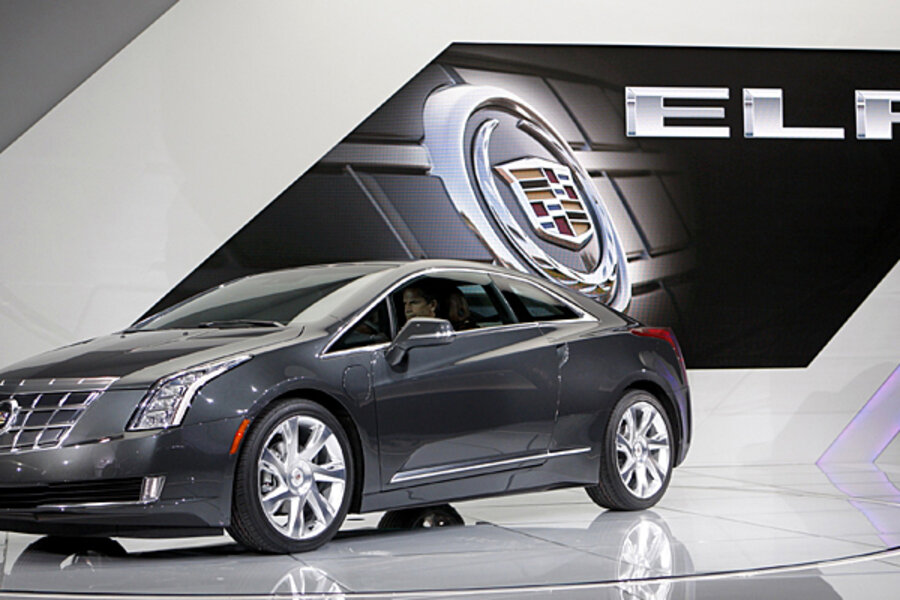'The electric car is not dead,' says GM chief
Loading...
Well, duh.
The day after it unveiled the 2014 Cadillac ELR range-extended electric luxury coupe, GM's North America chief Mark Reuss told attendees at a trade event that "the electric car is not dead."
“That’s despite what you might hear, and despite what you might read about Americans not being ready for it," Reuss continued, "or about it being ‘under attack’ by local governments retracting incentives for it.”
Why did Reuss feel the need to say what should be obvious--from sales data if nothing else?
Largely because much of the media has confused underachieving on sales targets with failure in the market.
If you're inclined to think that the cup is half-full, then the fact that plug-in electric cars tripled their U.S. sales last year over the year before is good news.
But if you think half-empty cups make better headlines, you can point out that neither Nissan nor GM achieved the ambitious sales goals announced for their plug-ins before the cars went on the market in 2010.
Reuss was playing off the title of the documentary that slammed GM for taking back and crushing its EV1 battery electric cars a decade ago: Who Killed the Electric Car?
But the fact that he needed to say it speaks to a lack of general understanding of how the landscape will evolve over the next decade.
Recall that GM's product chief, Mary Barra, said in November that the company would downplay full hybrids in favor of plug-in vehicles, as well as its eAssist mild-hybrid system.
While the Chevrolet Volt didn't meet sales targets either for 2011 or 2012, its sales did triple last year, making it conclusively the highest-volume plug-in car sold in the U.S.
Globally, the Volt and its Opel/Vauxhall Ampera twin are neck-and-neck with the Nissan Leaf for volume leadership among plug-ins.
And the Volt is engineered not only with a backup range-extender that eliminates driver anxiety over running out of juice, it also exploits less of its battery capacity and uses thermal conditioning to maintain optimal temperatures--which may extend battery life in the car's later years.
But the Volt, the Leaf, the ELR, and other plug-in cars are still at the very earliest stages of adoption, purchased by a variety of early adopters with varying motivations.
Mass-market acceptance of plug-ins will come, Reuss said, "when technology advances electricvehicles to the point where they offer comparable performance at comparable prices."
Reuss's comments provide a counterpoint to former GM product czar Bob Lutz's suggestion that GM should not have pursued the Volt--a car he famously championed--but instead electrified larger vehicles like the Cadillac Escalade and pickup trucks.
The Lutz comments, of course, should be asterisked by noting that he is now a partner in VIA Motors--which is attempting to sell plug-in hybrid conversionsof precisely those kinds of vehicles.
Reuss clearly knows the sales figures, the buyer survey data, and GM's future product plans.
“It takes a long time to change an industry, to change habits, and to change a way of life," he said.
But for plug-in fans, perhaps the most interesting nugget of news had to do with the next generation of the Chevrolet Volt, likely to arrive as a 2016 model or thereabouts.
That car, he said, "will be even better"--and, he noted, it will be "thousands of dollars" cheaper than the $39,995 base price of the 2013 model.
Most interesting, Reuss dropped a piece of news that hadn't previously been reported: The next Chevrolet Volt will have its own dedicated "platform," rather than adapting the global compact-car platform used for the Chevy Cruze sedan and other vehicles.
A dedicated platform for Voltec-powered cars--not only the Volt, but related models like the Cadillac ELR and perhaps a Buick Electra as well--will allow GM to do more innovative packaging, perhaps including a flat battery pack in part of the floorpan. Stay tuned for more on that piece of news.
Meanwhile, put away your black bunting. Electric cars are alive and well. It'll just take time.







